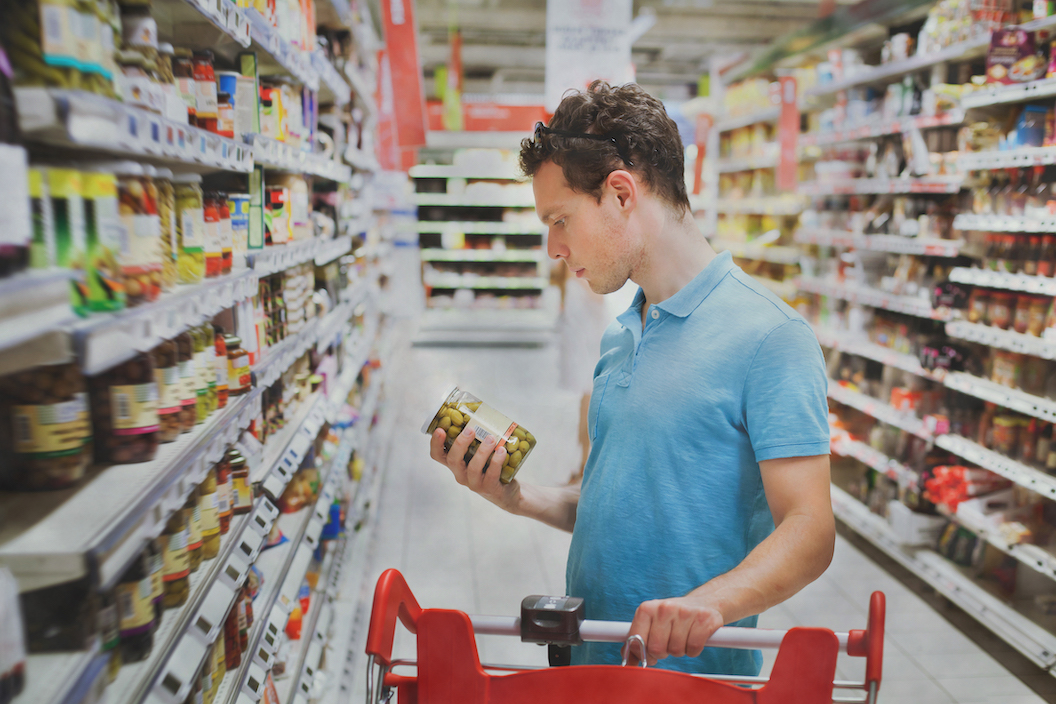Nutritional information on food packaging can be confusing with traffic light systems, percentages, graphs and grids. Let’s look at how to read them to get the most out of what’s on our labels.What are food labels for?
What are food labels for?
They give us information. The labels list ingredients in weight from biggest to smallest, and the energy the product provides, measured in units called calories (kcal). Often displayed as a grid or table, they show the amount of calories, fat, saturated fat, carbohydrate, sugar, protein and salt it contains.
Information is provided per 100 grams and sometimes per recommended portion too. Labels are a legal requirement for packaged foods. There are some exemptions, which include fresh uncut fruit & veg, herbs & spices, tea, coffee, flours, some vinegars and alcoholic drinks above 1.2%.
The guidelines below tell us if a food is high in fat, saturated fat, salt, sugar or not. If you’re trying to lose weight, it can be useful to know what’s in your food so you can make decisions that fit with how you want to eat.
Total fat
- High: more than 17.5g of fat per 100g
- Low: 3g of fat or less per 100g
Saturated fat
- High: more than 5g of saturated fat per 100g
- Low: 1.5g of saturated fat or less per 100g
Sugars
- High: more than 22.5g of total sugars per 100g
- Low: 5g of total sugars or less per 100g
A note on sugars: manufacturers use lots of words to describe forms of sugar, these include syrup, barley malt, molasses, honey, fruit juice concentrate and words ending in ‘ose’ like fructose, sucrose, dextrose and maltose, so look out for these.
Salt
- High: more than 1.5g of salt per 100g (or 0.6g sodium)
- Low: 0.3g of salt or less per 100g (or 0.1g sodium)
Traffic light system
The front of supermarket packaging often features a traffic light label. By using red, amber and green colour coding, we can tell quickly if a food has high, medium or low amounts of fat, saturated fat, sugars and salt:
- red means high levels
- amber means medium levels
- green means low levels
Be aware that often a manufacturer’s serving size may be different to our portioning. We might dish up twice as much as their serving size suggests.
You’ll also see calories/energy represented on food labels as a percentage of an adult’s daily recommended intake.
Top tips for understanding food labels
- Total fat, saturated fat, sugar and salt are the most important to monitor and reduce for the sake of our health.
- Red levels on packaging don’t necessarily mean foods we need to always avoid. This is because some foods may have red levels of sugars and fats but still benefit our health. Take muesli with dried fruit, for instance. It may be red on sugars due to the dried fruits, but it contains valuable fibre we need in our diet. Or salmon stir fry. It may be red in fats but it’s rich in omega 3 fatty acids which are of great benefit to us. Get to know your labels and let them help you make great decisions.
- Be mindful of your portion control.
- Use the per 100g column when comparing foods as serving sizes often vary.
- Remember, even healthier packaged foods may be higher in calories and fat/sugar/salt than their homemade equivalent – plus you can usually save money by making meals from scratch too.
For a healthy, balanced diet, the NHS guidelines recommend we:
- eat at least 5 portions of a variety of fruit and vegetables every day
- base meals on potatoes, bread, rice, pasta or other starchy carbohydrates – choose wholegrain or higher fibre where possible
- have some dairy or dairy alternatives, such as soya drinks and yoghurts – choose lower-fat and lower-sugar options
- eat some beans, pulses, fish, eggs, meat and other protein – aim for 2 portions of fish every week, 1 of which should be oily, such as salmon or mackerel
- choose unsaturated oils and spreads, and eat them in small amounts
- drink plenty of fluids – the government recommends 6 to 8 glasses a day
By all means use labels for to help guide you when it comes to choosing foods, but remember that making little positive changes consistently is what will keep you progressing towards success.



